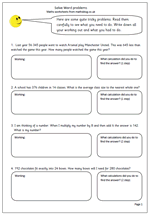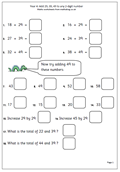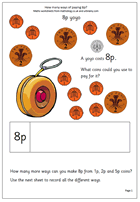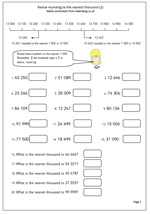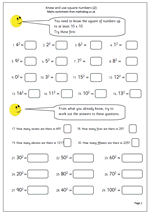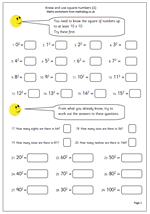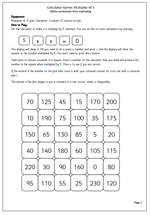 The idea of this game is to make a row of 4 in any direction before your opponent. Take it in turns to use the calculator to multiple chosen numbers to match numbers on the grid. This is excellent practice at multiplying and dividing by 5 mentally and then using the calculator to check answers. Suitable for year 3 upwards.
The idea of this game is to make a row of 4 in any direction before your opponent. Take it in turns to use the calculator to multiple chosen numbers to match numbers on the grid. This is excellent practice at multiplying and dividing by 5 mentally and then using the calculator to check answers. Suitable for year 3 upwards.
What’s New: Year 4 Multiplication
What have we got today? It’s the second in our multiplying by 3, 4, 6, 8 and 10 worksheets, suitable for year 4 children or those who are beginning to know their tables.
The best way to learn tables is to recite them out loud eg ‘4 times 3 is 12, then shorten it to, ‘4 3s are 12’, with the ultimate aim of being able to say the product for any two single digits without having to work it out.
Coming soon: tables, calculator game and probability
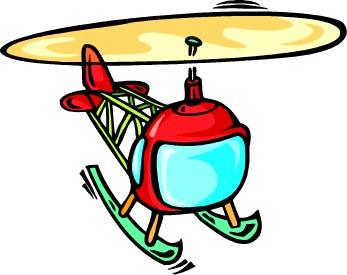 What have we got next week? we have the second in our multiplying by 3, 4, 6, 8 and 10 worksheets, suitable for year 4 children or those who are beginning to know their tables. The best way to learn tables is to recite them out loud eg ‘4 times 3 is 12, then shorten it to, ‘4 3s are 12’, with the ultimate aim of being able to say the product for any two single digits without having to work it out – just like knowing your own name!
What have we got next week? we have the second in our multiplying by 3, 4, 6, 8 and 10 worksheets, suitable for year 4 children or those who are beginning to know their tables. The best way to learn tables is to recite them out loud eg ‘4 times 3 is 12, then shorten it to, ‘4 3s are 12’, with the ultimate aim of being able to say the product for any two single digits without having to work it out – just like knowing your own name!
If you want further practice on tables then our calculator games are ideal. The idea of the game is to make a row of 4 in any direction before your opponent. Take it in turns to use the calculator to multiple chosen numbers to match numbers on the grid. This is excellent practice at multiplying and dividing by 5 mentally and then using the calculator to check answers. Suitable for year 3 upwards.
For Year 6 we have a probability page that looks at writing the probability of events happening as a fraction or a decimal fraction.
For example, the probability of getting a head when tossing a coin is 1/2, but this can also be written as 0.5. That one is easy, but many others are much trickier.
Free maths worksheet: Solve word problems
Children often find word problems very tricky, partly because they are unsure of what calculations to carry out to reach the solution. This page has a small number of word problems, but it asks for the working out to be shown and what calculation needs doing eg addition.
The first two questions require only a single step to reach the answer, but the second two need two steps, which makes them much harder.
Resource of the week: adding 29, 39 etc
Once children are really secure and confident with adding 9 to a 2-digit number they can quickly catch on to how to add 19, 29 etc. Once again the process is the same: add the nearest whole ten and then subtract 1. Once this has been mastered similar techniques can be used to add 2-digit numbers that have 8 in the units, subtracting two rather than one, which makes adding any 2-digit numbers fairly straightforward!
This page, and many others, can be found in our Year 4 maths worksheets under Knowing Number Facts.
Year 1 maths worksheet: Money investigation
This is a nice mini investigation using coins for children who are familiar with coins and counting. A yoyo costs 8p, but how many different ways are there of paying using 1p, 2p and 5p coins?
Suitable for Year 1 children it is a good idea to have a selection of these coins handy so that they can count out and record the different combinations. A separate page is available for recording either by drawing or writing the amounts down. An important aspect of this type of work is to check that the same result has not been recorded twice.
Year 5 maths worksheet: Rounding to the nearest thousand (2)
This is a follow up page to our earlier worksheet on rounding for year 5 children.When rounding to the nearest thousand the key digit is the hundreds digit. If it is 5 or more round up to the next whole thousand. If it is less than 5 then take away the hundreds tens and units and leave the number ’rounded down’.
With practice children should be able to round numbers quickly and also begin to see what is a sensible rounding. Should it be to the nearest hundred, thousand or ten thousand?
Year 6 Maths worksheet: Square numbers (2)
Here we have a follow up page for the year 6 maths worksheet on square numbers published on Thursday. Further practice at remembering square numbers and using this knowledge to work out square numbers of multiples of 10.
Coming soon: rounding, counting investigation and word problems
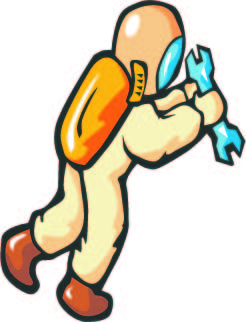 Next week we will have another page suitable for Year 5 children on rounding.When rounding to the nearest thousand the key digit is the hundreds digit. If it is 5 or more round up to the next whole thousand. If it is less than 5 then take away the hundreds tens and units and leave the number ’rounded down’.
Next week we will have another page suitable for Year 5 children on rounding.When rounding to the nearest thousand the key digit is the hundreds digit. If it is 5 or more round up to the next whole thousand. If it is less than 5 then take away the hundreds tens and units and leave the number ’rounded down’.
We will also have a nice year 1 mini investigation using coins for children who are just becoming familiar with coins and counting. A yoyo costs 8p, but how many different ways are there of paying using 1p, 2p and 5p coins. It is a good idea to have a selection of these coins handy so that they can count out and record the different combinations. A separate page is available for recording either by drawing or writing the amounts down. An important aspect of this type of work is to check that the same result has not been recorded twice.
Even in Year 6 children often find word problems very tricky, partly because they are unsure of what calculations to carry out to reach the solution. This page has a small number of word problems, but it asks for the working out to be shown and what calculation needs doing eg addition.
The first two questions require only a single step to reach the answer, but the second two need two steps, which makes them much harder.
Year 6: Know and use square numbers
By Year 6 children are expected to know the square of numbers up to at least 10. This page provides some revision of this together with some extension work on finding square numbers of multiples of 10. Care needs to be taken when finding these. For example, because 50 is 5 x 10, the square of 50 can be broken down into 5 x 5 x 10 x 10 which makes 250 x10 which is 2 500. Keep an eye out for some children who think it is just 250.
This page can be found in our Year 6, Knowing number facts section. It is also a useful page for the year 6 planning: Block B, Unit 3, week 2 for those teacher viewers.

